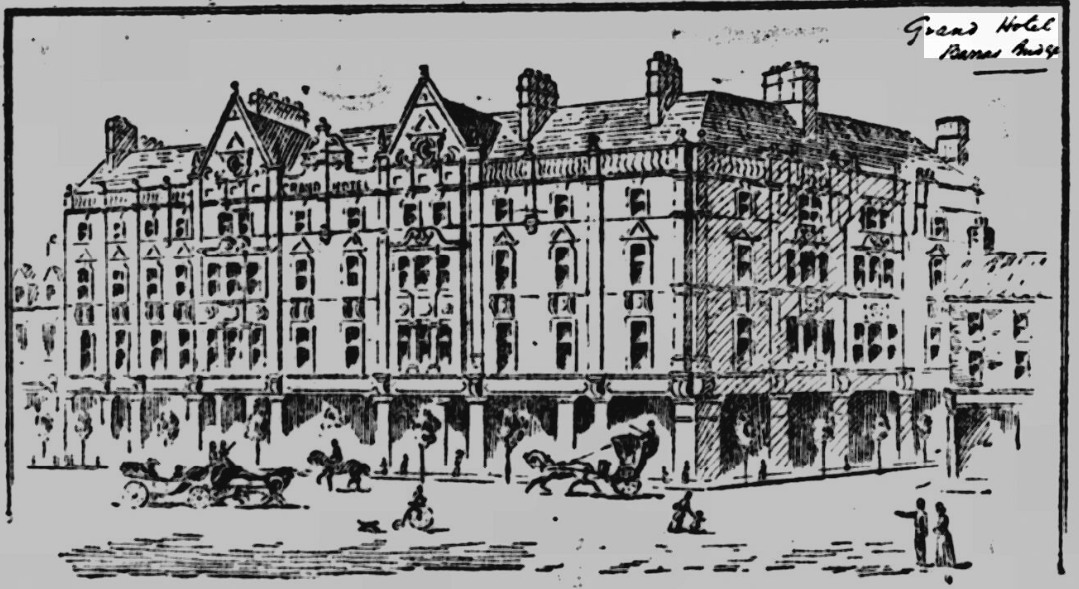
Newcastle
Grand Hotel, Barras Bridge
Last Updated:
29 Oct 2024
Newcastle
This is a
Hotel, Pub
54.978412, -1.614051
Founded in
Current status is
Extant
Designer (if known):
Lamb, Armstrong & Knowles

Locally Listed
We're getting into the heart of Newcastle now, and where better to start from the top of town than the Grand Hotel.
It was built on the site of some high rise townhouses you can see on the 3rd shot - presumably commercial premises on the ground floor similar to today. James Deuchar was the man to propose a new hotel at this sit, but not without substantial opposition. In fact, a whole public meeting was hotel to protest against the granting of the license, with up to 200 people present. Given the amount of pubs around here, there was great concern about another establishment selling alcohol which would, and I quote, "make another drunkery". At this time there were 15 pubs and 7 beer houses within 340 yards, and bare in mind the temperance movement was at its full furore in the 1880s.
Alas the license was granted in 1889 despite the continued objections (even citing the hotel to be "a source of evil to the students at the college!). The ground floor featured a total of 6 shops with a frontage of 140 ftm with the interior also "admirable arranged". On the ground there there was a buffet, dining and smoke rooms all fitted with oak, a coffee room and drawing rooms and well as a hoist to communicate between each floor. Each of the 100 bedrooms was fitted with mahogany and walnut by local businesses complete with electric light fittings. Deuchar, of the brewery at Sandyford and tons of the regions pubs, didn't have go all out to serve the prim and proper of the city.
The architects were Messrs. Lamb, Armstrong and Knowles. Their work also includes St Marks at Salem Street, Jarrow as well as tons of commercial & domestic premises in and around Tyneside. Consett's Wesleyan Church and Easington's infirmary were also designed at their offices at 38 Grainger Street West.
The hotel is now commercial premises and student accomodation.
Listing Description (if available)


The incredible extent of Newcastle's transformation over the turn of the 20th century is on display through these two Ordnance Survey maps. The first, surveyed in 1896, shows a detailed plan of the Grand Hotel opposite St Thomas the Martyr. You'll instantly notice the tram line leading along Northumberland Street to the Great North Road. A single track took units into the Tram Car Depot at what's now the Herschel Newcastle University building. The Civic Centre area is the single biggest transition. a whole neighbourhood was cleared, featuring a brewery and countless domestic dwellings. Lovaine Hall, a warehouse and the Eye Infirmary are no more. You may notice the very straight garden plots too - a legacy of when this was Pandon Dene.
The 1910s map shows further development of the tram network, as well as a church hall added nearby. There are two drill halls in view for both the 3rd Volunteer Battalion Northumberland Fusiliers and the 1st Newcastle RE Volunteers on Sandyford Road. The Post Office, originally the toll house, stood near St Thomas' until 1935 (https://x.com/neheritagelib/status/1850874131031511509).

Let's turn the clock back a bit to the 1850s. Again, recognisable, but big changes even before what we saw. The Grand Hotel wouldn't be built for another 40 years. Instead there are tall townhouses with commercial premises on the ground floor and extensive allotments at the rear. Pandon Dene is still extant with the long garden plots we can see through to the 1910s. The Hancock Museum was yet to be built, Instead, we see gardens. Northumbria University was the Northumberland Baths Cricket Ground, opened in the mid 1830s and became the staple of North East sport. Football, rugby and wrestling all took place here too - even the FA Cup was staged here.

The Grand Hotel, with the majority of street clutter removed with AI. Taken September 2024.

The Grand Hotel just after opening c1890. Source: Newcastle Libraries

A contemporary illustration of the Grand Hotel, from the Newcastle Chronicle, 1890
